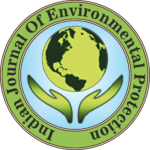IJEP 43(1): 80-88 : Vol. 43 Issue. 1 (January 2023)
Mannu Yadav1 and Rakesh Chandra Vaishya2*
1. Motilal Nehru National Institute of Technology, Geographic Information System (GIS) Cell, Prayagraj, Uttar Pradesh – 211 004, India
2. Motilal Nehru National Institute of Technology, Department of Civil Engineering, Prayagraj , Uttar Pradesh – 211 004, India
Abstract
In present research work, effective utilization of geospatial tools and techniques alongwith analytical hierarchy process (AHP) was done to identify and map the potential zone for riverfront development on the bank of the river Ganga from Kaushambi to Prayagraj district in Uttar Pradesh, India. In this paper, population cluster, distance from the river, existing ghats, cultural/heritage sites, road, distance from railway stations, slope, elevation and stable/ non-shifting points were among the nine factors used to evaluate the sites for riverfront development. These factors were selected by suggestions from professional experts and relevant literature. A conceptual methodology has been developed to achieve the objective of this study. Therefore, AHP technique has been used to estimate the weight of these criteria using a pairwise comparison matrix. Furthermore, the consistency ratio was achieved at 0.07. The final potential site map has been classified into three categories: suitable, moderately suitable and unsuitable. This study would be helpful for, in terms of socio-economic, cultural and environmental, administration as well as local people and it also helps to control the bank erosion of the river system.
Keywords
Analytical hierarchy process, site selection, riverfront development, Ganga river, GIS
References
- Oh, H., A.M. Fiore and M. Jeoung. 2007. Measuring experience economy concepts: Tourism applications. J. travel res., 46(2): 119-132.
- Bunruamkaew, K. and Y. Murayam. 2011. Site suitability evaluation for ecotourism using GIS and AHP: A case study of Surat Thani province, Thailand. Procedia Social Behavioural Sci., 21: 269-278.
- Mak, A.H., M. Lumbers and A. Eves. 2012 Globa-lisation and food consumption in tourism. Annals Tourism res., 39(1):171-196.
- Che, Y., et al. 2012. Assessing a riverfront rehabilitation project using the comprehensive index of public accessibility. Ecol. Eng., 40: 80-87.
- Basaiaoclu, H., et al. 1997. Selection of waste disposal sites using GIS. J. American Water Resour. Assoc., 33(2): 455-464.
- Sener, S., et al. 2010. Combining AHP with GIS for landfill site selection: a case study in the lake Beysehir catchment area (Konya, Turkey). Waste manage.,30(11): 2037-2046.
- Saaty, T. L. 1980. The analytic hierarchy process (AHP). J. Operational Res. Soc., 41(11):1073-1076.
- Bhushan, N. and K. Rai. 2004. Strategic decision making : Applying the analytical hierarchy process. Decision Engineering, Springer.
- Vahidnia, M.H., A.A. Alesheikh and A. Alimo-hammadi. 2009. Hospital site selection using fuzzy AHP and its derivatives. J. env. manage., 90(10): 3048-3056.
- Gunen, M. A. 2021. A comprehensive framework based on GIS-AHP for the installation of solar PV farms in Kahramanmara, Turkey. Renewable Energy. 178:212-225.
- Khodaparast, M., A.M. Rajabi and A. Edalat. 2018. Municipal solid waste landfill siting by using GIS and analytical hierarchy process (AHP): a case study in Qom city, Iran. Env. earth sci., 77(2): 1-12.
- Bandyopadhyay, S., et al. 2009. Assessment of land suitability potentials for agriculture using a remote sensing and GIS based approach. Int. J. Remote Sensing.30(4):879-895.
- Saaty, T. L. 1994. Homogeneity and clustering in AHP ensures the validity of the scale. European J. Operational Res., 72(3):598-601.
- Neissi, L., M. Albaji and S.B. Nasab. 2020. Combination of GIS and AHP for site selection of pressurized irrigation systems in the Izeh plain, Iran. Agric. Water Manage.,231:106004.
- Alonso, J. A. and M.L. Lamata. 2006. Consistency in the analytic hierarchy process: A new approach. Int. J. Uncertainty, Fuzziness Knowledge-based Systems. 14(4):445-459.
- Giamalaki, M. and T. Tsoutsos. 2019. Sustainable siting of solar power installations in mediterranean using a GIS/AHP approach. Renew. Energy.141: 64-75.
- Colak, H. E., T. Memisoglu and Y. Gercek. 2020. Optimal site selection for solar photovoltaic (PV) power plants using GIS and AHP: A case study of Malatya Province, Turkey. Renewable Energy. 149: 565-576.
- Biswas, S., B.P. Mukhopadhyay and A. Bera. 2020. Delineating groundwater potential zones of agriculture dominated landscapes using GIS based AHP techniques: A case study from Uttar Dinajpur district, West Bengal. Env. Earth Sci., 79(12):1-25.
- Chaudhary, P., et al. 2016. Application of an analytic hierarchy process (AHP) in the GIS interface for suitable fire site selection: A case study from Kathmandu metropolitan city, Nepal. Socio-Economic Planning Sci., 53: 60-71.
- Georgiou, A. and D. Skarlatos. 2016. Optimal site selection for sitting a solar park using multi-criteria decision analysis and geographical information systems. Geosci. Instrumentation Methods Data Systems. 5(2): 321-332.
- Khan, D. and S.R. Samadder. 2015. A simplified multi-criteria evaluation model for landfill site ranking and selection based on AHP and GIS. J. Env. Eng. Landscape Manage., 23(4): 267-278.
- Sadeghi, M. and M. Karimi. 2017. GIS-based solar and wind turbine site selection using multi-criteria analysis: Case study Tehran, Iran. Int. Arch. Photogramm. Remote Sens. Spat. Inf. Sci., 42: 469-476.
- Hott, R., R. Santini and J. Brownson. 2012. GIS-based spatial analysis for large-scale solar power and transmission line issues: Case study of Wyoming, US. Solar Conference, Boulder, Colorado. Proceedings, pp 2274-2279.
- Teknomo, K. 2006. Analytic hierarchy process (AHP) tutorial.
